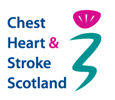Anxiety
What is Anxiety?

- View text alternative
-
Thoughts: Worry, unable to concentrate, being indecisive, sense of losing control, fear the worst.
Mood: Fear, panic irritable.
Behaviour: Avoidance, agitated/restless, increased alcohol, sighing/yawning.
Physical: Breathing difficulties, disturbed sleep/apetite, effects of fight-flight: muscle tension, HR etc.
Environment
Anxiety is an emotional state, not a mental illness and affects us all. Anxious feelings can range from being slightly uneasy to a continuing feeling of fear and impending panic. When they happen often, of if they become very severe, or if they occur when there seems to be no reason for it, then the anxiety has become a problem.
Anxiety can affect us in 3 ways:
- It affects how we feel.
- The physical signs.
- How we think and how we act and behave.
The most common physical symptoms include:
- Breathing difficulties and tightness in the chest.
- Heart pounding or racing and palpitations.
- Dizziness.
- Rubbery legs.
- Seating stomach churning.
- Feeling that things are strange or unreal.
- Feeling of dread that something terrible is going to happen.
The thing to remember is that although these feelings are unpleasant and uncomfortable, they are not dangerous and you can learn ways to overcome them.
With anxiety it is quite common to think in a way that makes the problem worse:
- Typical anxious thoughts include “What if ….I made a fool of myself”.
- Can’t cope thoughts like “this is awful I am not going to manage it”.
Escape or avoid thoughts when they feel their anxiety may get out of control.




